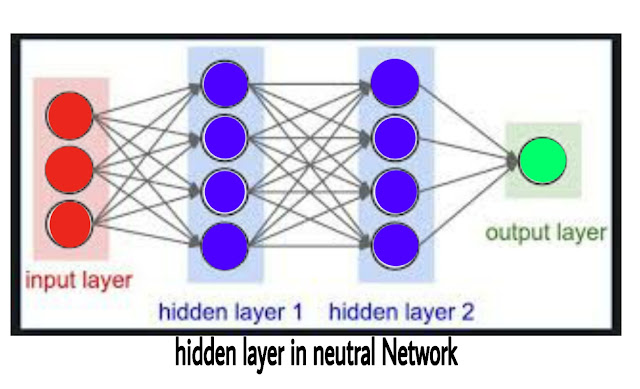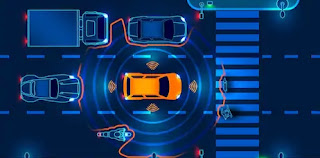What is Neural Network and Deep learning
Introduction-
Artificial intelligence (AI) refers to the theory and development of computer systems capable of performing tasks that normally require human intelligence. AI is at the top of the propagation curve and an increasing number of studies based on machine learning are beginning to appear in the intensive care literature.
A subset of machine learning technology, Deep Learning, has the potential to revolutionize the way healthcare is delivered. Making the most of the opportunity presented by practitioners of this technological paradigm shift will require acquiring knowledge and skills to correctly interpret the information generated by these complex algorithms.
For the past 10 years, the excellent performing Artificial Intelligence systems such as Google's latest automated translators or speech identifiers on smartphones have resulted in a technology called "deep learning".Here we provide a brief introduction to the deep learning and "Neural net".
What is Neural network?
The neural network is a series of algorithms which plan to identify the major relationships during a set of knowledge through a process that mimics the way the human brain operates. In this sense, neural networks refer to systems of neurons, either biological or artificial in nature. Neural networks can adapt to changing inputs; The network therefore produces the best possible results without redesigning the output criteria. The concept of neural networks, rooted in artificial intelligence, is rapidly gaining popularity.
 |
| Neural networks process |
Neural nets are a means of machine learning in which a computer learns to perform certain tasks by analyzing training examples. Typically, examples are labeled by hand in advance. For example, object recognition systems can be fed thousands of images of labels in cars, homes, coffee cups, and so on, and this will elicit visual patterns in images that consistently correlate with particular labels.
How Neural Network Work?
A neural network functions similar to the neural networks of the human brain. In neural networks a "neuron" is a mathematical function that collects and classifies information according to a specific architecture. The network bears a robust resemblance to statistical methods like curve fitting and multivariate analysis .
A neural network consists of layers of interconnected nodes. Each node is a perceptron and is similar to multiple linear regression. Perceptron feeds signals generated by more than one linear regression into an activation function that may be inauspicious.
In a multi level perceptron, it is arranged in interconnected layers. The input layer collects the input pattern. The output layer contains classification or output signals from which input patterns can be mapped. For example, the pattern may include a list of quantities for technical indicators about safety; Potential outputs can be "buy," "stop" or "sell."
Hidden layers correct the input weighting until the margin of the neural network is minimized. It is envisaged that hidden layers add additional features to the input data, which is the predictive power of the output. It describes feature extraction, which serves the same utility as statistical techniques such as principal component analysis.
Loosely built on the human brain, a neural network consists of thousands or millions of simple processing nodes that are densely interconnected. Most of today's neural nets are organized into layers of nodes, and they are "feed-forward", meaning that the data moves through them in only one direction.
An individual node may be connected to several nodes in the layer below it from which it receives data, and several nodes in the layer above it from which it sends data.
For each of its incoming connections, a node will assign a number known as a "weight". When the network is activated, the node receives a different data item - a different number on each of its connections and multiplies it by the corresponding weight. It then combines the resulting products together, yielding the same number.
If that number is less than the threshold value, the node returns no data at the next layer. If the number exceeds the threshold value, the node "fires", which in today's neural nets typically means sending the number - the sum of the weighted input - with all its outgoing connections.
Use of Neural Networks-
Neural networks are frequently used, with applications for business analysis, enterprise planning, trading, ,financial operations, and product maintenance. Neural networks have also achieved wide-spread acceptance in business applications such as forecasting and marketing research solutions, fraud detection and risk assessment.
A Neural network evaluates price data and discovers business decision making opportunities based on data analysis. Networks cannot replicate subtle interdependencies and other methods of technical analysis. According to research, the accuracy of neural networks in making price forecasts for stocks varies. Some models predict true stock prices 50 to 60 percent of the time while others are accurate in 70 percent of all instances. Some people have said that a 10 percent improvement in efficiency can be sought by an investor from a neural network.
There will always be task and data sets classes that perform better analysis using algorithms already developed. It is not so much the algorithm that matters; It is well-crafted input data on the target indicator that ultimately determines the level of success of a neural network.
What is Deep Learning ?
Deep learning is actually a new name for an approach to artificial intelligence called neural networks, which have been going in and out of fashion for over 70 years. The neural network was first proposed in 1944 by Warren Mc Aulph and Walter Pitts, two researchers at the University of Chicago, sometimes called the primary science department. Neural nets acts as a major area of research in both computer science and neuroscience.
The technology enjoyed a resurgence in the 1980s, fell into eclipse again in the first decade of the new century, and came back like gangbusters in the second, largely fueled by the increased processing power of graphics chips.
Definition-
Deep learning is additionally referred as deep structured learning, which may be a component of wide family of machine learning methods supported by artificial neural networks with representational learning. Deep learning involves the study of Artificial Neural Networks and Machine Learning related algorithms that contain more than one hidden layer. Deep learning involves mathematical calculations, which can be thought of as a mixed composition of straightforward blocks of a particular type, and where a number of these blocks are often adjusted to raised predict the ultimate outcome.
an artificial intelligence function that mimics the functioning of the human brain by creating patterns for use in data processing and decision making. Deep learning could also be a subset of machine learning in AI. that consists of networks that are capable of learning unprecedented from unaided or unlabeled data. It is also referred to as deep neural learning or deep neural networks.
Main Applications of Deep Learning:
Voice-activated-assistant and voice search:
In present days apple's Siri, amazon's Alexa, Google home and cartona already exist for assisting in number of user in there daily life. It is the possible result of deep learning and voice-activated intelligent assistant. Now deep learning is automatically adding sound to movies.
Image recognition:
It is also a Deep learning project step toward at science. the main aims to recognize and identify object and people in image and similarly to understand the context and content.
Automatic handwriting generation and text generation:
The model is capable of learning how to spell, form sentence, punctuate and even capture the style of text and handwriting.
Using deep learning corpus of text is learn and from this model is learnt and made this model to generate word by word text.
Healthcare sector:
Mobile and Monitoring Apps? or prediction and personalized medicine on the basis of Biobank-data? Artificial intelligent is completely remodeling life of medicines, healthcare industry and sciences.
Auto self driven cars:
Now in present days companies like Tesla are on the way of making self driven cars for this companies are using start out by training algorithm using enormous amount of data they are using different kinds of high level sensor and digital sensors system for this type of project.









0 Comments